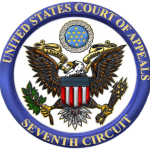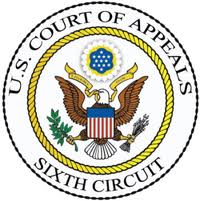 On July 2, 2014, the U.S. Court of Appeal for the Seventh Circuit entered its opinion in IKO Roofing Shingle Products Liability Litigation, No. 14-1532 (7th Cir. July 2, 2014), and vacated a district court’s decision denying class certification.
On July 2, 2014, the U.S. Court of Appeal for the Seventh Circuit entered its opinion in IKO Roofing Shingle Products Liability Litigation, No. 14-1532 (7th Cir. July 2, 2014), and vacated a district court’s decision denying class certification.
A Seventh Circuit panel of Judges Wood, Easterbrook, and Kanne found that the district court erred when it interpreted the Supreme Court’s decisions in Wal-Mart Stores, Inc. v. Dukes, 131 S. Ct. 2541 (2011), and Comcast Corp. v. Behrend, 133 S. Ct. 1426 (2013), as requiring plaintiff to demonstrate “commonality of damages.” Instead, the Seventh Circuit held that these SCOTUS decisions merely require plaintiffs to match their theory of loss to their theory of liability—a fact that is “equally true in a suit with just one plaintiff.”
We have previously blogged about the Seventh Circuit’s limiting interpretation of Comcast (read more here). The Seventh Circuit went further in IKO and essentially found the fact that Comcast involved a Rule 23 class action beside the point.
Although the IKO decision arose outside the employment context, we anticipate that plaintiffs’ counsel will argue that it spells bad news for employers faced with class claims, particularly in the Seventh Circuit, and that it further limits defendants’ ability to use disparate damages as grounds to oppose class certification.
Factual Background
Purchasers of organic asphalt roofing shingles brought suit against IKO Manufacturing contending that it falsely told customers that the shingles met an industry standard known as ASTM D225. Plaintiffs asked the district court to certify a class that would cover IKO’s sales in eight states since 1979. The district court denied the motion.
The district court noted that Comcast and Wal-Mart require proof that plaintiffs, “will experience a common damage” and that their claimed damages “are not disparate.” The district court found that the inevitable differences in consumers’ experiences with IKO’s tiles prevented class certification. Subsequently, Plaintiffs sought interlocutory review under Rule 23(f), which the Seventh Circuit granted.
The Seventh Circuit’s Opinion
The Seventh Circuit disagreed with the district court’s reading of Wal-Mart and Comcast. It noted that, if the district court’s reading is correct, class actions about consumer products are “impossible.”
With respect to Wal-Mart, the Seventh Circuit explained that the case “has nothing to do with commonality of damages.” Instead, at least according to the Seventh Circuit, Wal-Mart deals with the need for “conduct” common to members of the class. In that case, damages differed but only because the underlying conduct differed. The Seventh Circuit reasoned that “[i]n a suit alleging a defect common to all instances of a consumer product, however, the conduct does not differ.”
With respect to Comcast, the Seventh Circuit recognized that the case “does discuss the role of injury under Rule 23(b)(3), though not in the way the district court thought.” The Seventh Circuit explained that, there, plaintiffs specified four theories of liability, and their damages expert estimated harm resulting from all four. Because the district judge certified a class limited to one of the four theories, plaintiffs lacked a theory of loss that matched the theory of liability.
The Seventh Circuit held that, in IKO by contrast, plaintiffs had two “theories of damages that match[ed] their theory of liability” and, therefore, plaintiffs did not run afoul of Comcast. The Seventh Circuit noted that, although a buyer-specific remedial approach (purchasers whose tiles actually failed are entitled to recover damages if non-conformity to the D225 standard caused the failure) “would require confining any class certification to questions of liability,” it “is not hard to frame liability issues suited to class-wide resolution.”
Implications for Employers
The Seventh Circuit’s ruling is plaintiff-friendly and cuts back on defenses that other jurisdictions have utilized to cabin class actions. In Comcast, the Supreme Court noted that, to meet the predominance requirement, plaintiffs must show that damages resulting from the alleged injury are “measureable ‘on a class-wide basis’ through use of a ‘common methodology.’” The Supreme Court went on to hold that plaintiffs’ model fell short of establishing that damages were “capable of measurement on a class-wide basis” and that, without another methodology, plaintiffs could not show Rule 23(b)(3) predominance:, “[q]uestions of individual damage calculations will inevitably overwhelm questions common to the class.”
Despite the Supreme Court’s language, in IKO, the Seventh Circuit specifically held that a plaintiff need not demonstrate “commonality of damages” to obtain class certification under Rule 23(b)(3). It remains to be seen whether the Seventh Circuit’s interpretation is faithful to the Supreme Court’s intent, and whether this interpretation will be applied to workplace class actions.
This blog previously appeared on the Seyfarth Shaw website.

